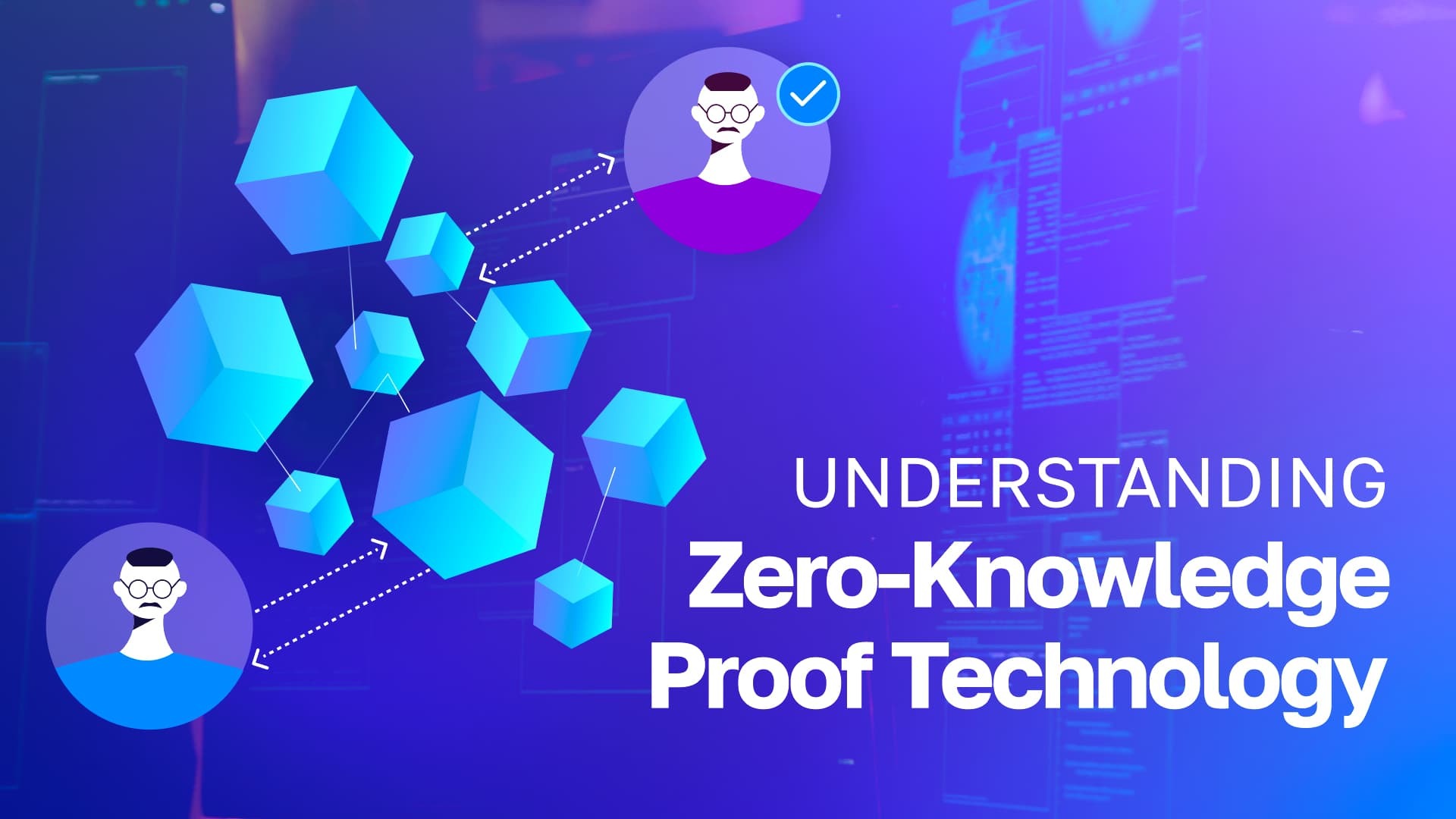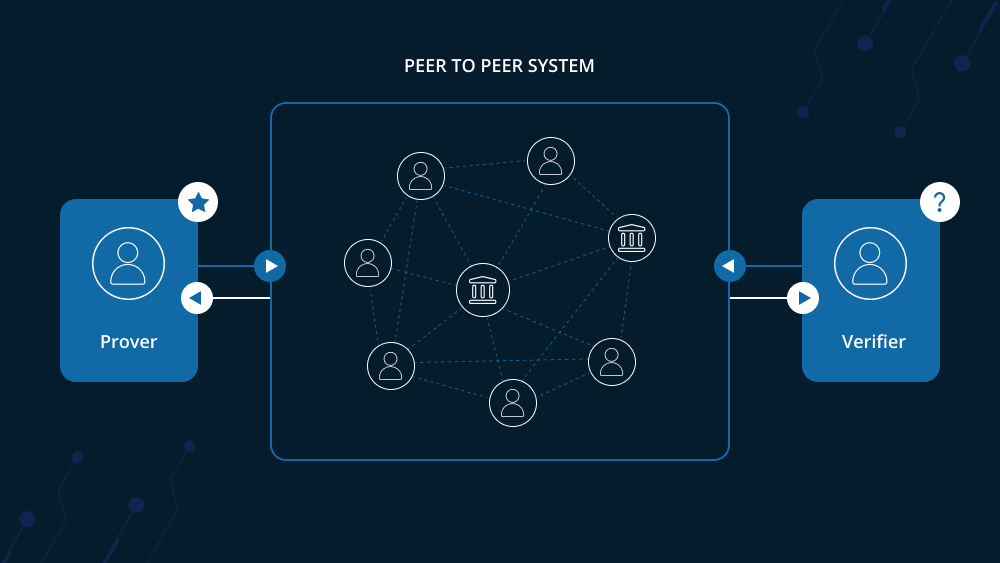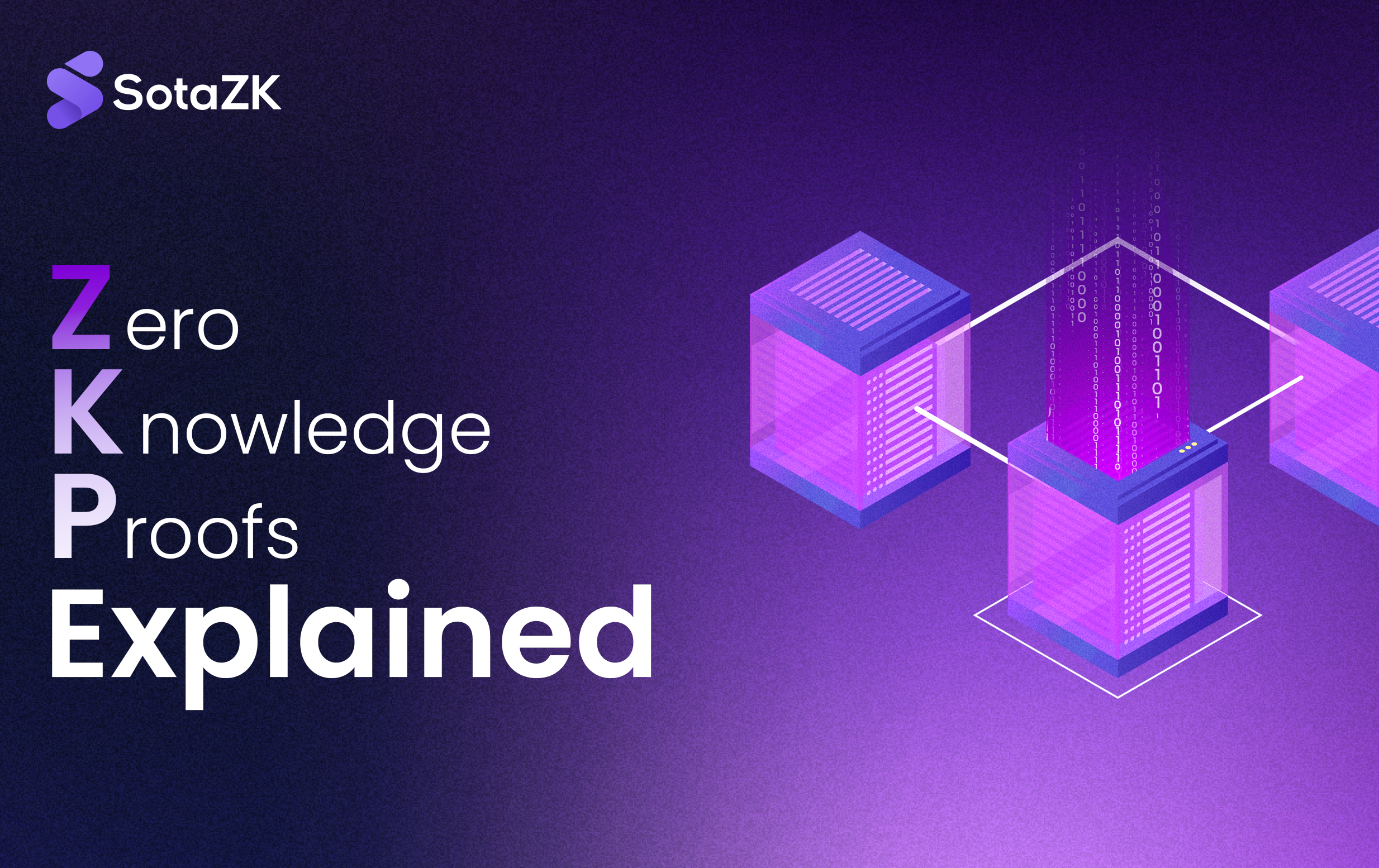In today’s digital landscape, privacy concerns have become paramount. As we increasingly rely on digital transactions, data sharing, and online interactions, the need to protect our personal information from prying eyes has never been more critical. Apply Zero-Knowledge Proof (zk) – a revolutionary concept in cryptography that promises to enhance privacy and security without compromising the integrity of the information being exchanged.
In this blog, we will delve into the world of zero-knowledge proof, exploring their fundamental principles, different types, and real-world applications. We will also examine the benefits and challenges associated with ZK and glimpse into their potential future impact on our digital lives. By the end of this article, you’ll have a solid understanding of how ZK works and why they are considered a game-changer in the quest for enhanced privacy and security in the digital age.
What is Zero-Knowledge Proof?

According to A. De Santis and G.Persiano (1992):
A zero-knowledge proof system of knowledge is a protocol between two parties called the prover and the verifier. The prover wants to convince the verifier that he ‘knows’ the proof of a given theorem without revealing any additional information. In other words, Zero-Knowledge Proof (ZK) are a fascinating and powerful concept in cryptography that allows one party (the prover) to demonstrate to another party (the verifier) that a particular statement is true, without revealing any additional information beyond the validity of the statement itself. This might sound paradoxical at first, but it is a well-established principle with significant implications for privacy and security.
How Zero-Knowledge Proof Works
Zero-Knowledge Proof (ZK) allows a prover to convince a verifier of the truth of a statement without revealing any underlying data. This is achieved through interactions that build the verifier’s confidence in the prover’s knowledge without disclosing the actual information.

To illustrate ZK, consider the “Ali Baba Cave” example:
- Setup: There is a cave with a circular path and a secret door that can be opened only with a specific password. The prover knows the password and wants to convince the verifier of this knowledge without revealing it.
- Process:
- The prover enters the cave and chooses one of the two paths, A or B.
- The verifier, standing outside, does not know which path the prover took.
- The verifier asks the prover to return via either path A or B.
- If the prover knows the password, they can open the secret door and return via the requested path. If not, they can only return via the correct path 50% of the time.
- Repetition: By repeating this process multiple times, the verifier’s confidence in the prover’s knowledge increases exponentially without ever learning the password.
Key Concepts in Zero-Knowledge Proof
This summary provides an overview of the key concepts and parties involved in Zero-Knowledge Proof, focusing on the roles of the prover and verifier and the principle of soundness.
Parties Involved
- Prover (P): The one who claims to know the information.
- Verifier (V): The one who needs to be convinced of the truthfulness of the claim.
The goal is to place most of the computational burden on the prover, ensuring the verifier can efficiently and accurately confirm the validity of the prover’s claims without extensive calculations. The verifier does not trust the prover initially, which necessitates the proof.
Soundness
Soundness ensures that an honest verifier cannot be deceived by a cheating prover. In the example, if the prover doesn’t know the password, they cannot consistently convince the verifier, who will then not be misled. This process allows for a controlled probability of deception, maintaining the integrity of the verification.
Types of Zero-Knowledge Proof
Here are five types of Zero-Knowledge Proof and their features to help you distinguish between them.
| Type |
Definition |
Examples |
Applications |
Benefits |
Drawbacks |
| Interactive Zero-Knowledge Proofs |
Involves back-and-forth communication between the prover and verifier |
“Ali Baba Cave” analogy. |
Cryptographic protocols requiring real-time interaction. |
Strong security through repeated interaction. |
Requires multiple communication rounds, which can be time-consuming and less efficient for large-scale applications. |
| Non-Interactive Zero Knowledge Proofs (NIZKPs) |
The prover generates a single proof for independent verification by the verifier.
|
Cryptographic proofs used in blockchain transactions. |
Blockchain and scenarios where interaction is impractical. |
Efficient and scalable with reduced communication overhead. |
Generally require more sophisticated cryptographic constructions, which can be complex to implement. |
| Zero Knowledge Succinct Non-Interactive Arguments of Knowledge (ZK-SNARKs) |
Zero Knowledge Succinct Non-Interactive Arguments of Knowledge (ZK-SNARKs) |
Used in Zcash for transaction validation. |
Blockchain for private, scalable transactions. |
High performance and low resource usage. |
The setup phase can be complex and require a trusted setup. |
| Zero Knowledge Scalable Transparent Arguments of Knowledge (ZK-STARKs) |
Transparent, scalable proofs without a trusted setup. |
Used in scalable blockchain solutions. |
Blockchain needing transparent proof systems. |
No trusted setup needed. |
Larger proof sizes and verification times compared to ZK-SNARKs. |
| Bulletproof |
Short, efficient proofs without a trusted setup. |
Used in Monero for transaction amount validation. |
Cryptocurrencies requiring efficient range proofs. |
No trusted setup, compact and efficient. |
Larger and more computationally intensive proofs compared to ZK-SNARKs. |
Practical Applications of Zero-Knowledge Proof
1. Cryptocurrencies: Enhancing Privacy in Blockchain Transactions
Zero-Knowledge Proof is pivotal in enhancing privacy within blockchain transactions. They enable participants to prove the validity of a transaction without revealing any transaction details. For instance, in the cryptocurrency Zcash, ZK is implemented through zk-SNARK (Zero-Knowledge Succinct Non-Interactive Arguments of Knowledge), allowing users to shield their transaction details, including the sender, recipient, and transaction amount, thus providing enhanced privacy over traditional blockchain transactions like those on Bitcoin .
2. Identity Verification
In the realm of identity verification, ZK allows users to prove their identity or specific credentials without exposing any personal information. This application enhances privacy and security by ensuring that only necessary information is disclosed. For example, a person could prove they are over 18 without revealing their exact birthdate or any other personal details. Projects like Sovrin and Microsoft’s decentralized identity systems utilize ZK to facilitate such privacy-preserving identity verifications .
3. Secure Voting Systems
ZK plays a critical role in secure voting systems, ensuring both the integrity and privacy of digital voting processes. In such systems, voters can prove their eligibility and the fact that they voted without revealing who they voted for. This ensures that the voting process is both verifiable and confidential. An example is the application of ZK in blockchain-based voting systems, which aim to enhance the transparency and security of elections while protecting voter privacy .
4. Regulatory Compliance
Zero-Knowledge Proof facilitates privacy-preserving audits and compliance checks, enabling companies to prove compliance with various regulations without disclosing sensitive business information. This is particularly useful in industries that handle large amounts of sensitive data, such as finance and healthcare. For example, a financial institution could prove that it meets anti-money laundering (AML) regulations without revealing specific customer transactions .
5. Privacy-Preserving Computation
ZK enables computations on private data without revealing the data itself, which is beneficial in numerous fields, including finance, healthcare, and supply chain management. In healthcare, for instance, researchers can perform studies on patient data to discover trends and insights without ever accessing the individual patient records directly. This ensures data privacy and security while allowing valuable computations and analyzes to be performed.
Conclusion
Zero-Knowledge Proofs offer significant benefits in terms of privacy, security, efficiency, versatility, compliance, and trust. They are crucial for protecting sensitive information and ensuring secure verification processes as digital interactions grow more complex. By enabling secure and private transactions, ZK helps prevent data breaches and privacy invasions, paving the way for a safer digital future. As we move towards an increasingly digital world, the adoption and integration of ZK will be crucial in ensuring that our personal information remains secure and our privacy intact.
At SotaZK Lab, we are dedicated to pioneering advancements in ZK and other privacy-preserving technologies. To stay updated with our latest developments, insights, and innovations, follow our blog. We regularly share valuable content that can help you stay ahead in the ever-evolving tech landscape. Additionally, leave your contact information to receive updates directly and stay connected with us. Together, we can build a more secure and private digital future!


